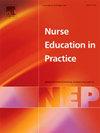在医疗和卫生专业教育中发展人工智能素养:探索ChatGPT、聊天机器人开发和基于模拟的学习。
IF 4
3区 医学
Q1 NURSING
引用次数: 0
摘要
目的:本研究考察了人工智能驱动的学习活动,包括基于chatgpt的学习和聊天机器人的开发,如何在基于模拟的学习框架中影响学生的提示技能和内在动机。背景:人工智能(AI)在医疗和卫生专业教育中的整合正在重新定义数字素养,这需要新的技能,如提示技能——制作精确的人工智能查询的能力。设计:该研究采用两阶段干预,在基于模拟的学习框架内结合chatgpt指导的分析和ChatBot创建,以评估提示技能和动机。方法:在每次活动(基于chatgpt的学习和ChatBot开发)后收集80名健康管理专业二年级本科生的数据。参与者完成了提示技巧量表和动机问卷。配对样本t检验和结构方程模型(SEM)用于检验差异和关联。结果:研究结果显示,ChatGPT和ChatBot活动在提示技能上没有显著差异,表明存在天花板效应。然而,聊天机器人的发展显著增强了内在动机,尤其是感知能力。结论:这些结果强调了结构化人工智能集成的重要性,表明交互式、动手学习(如ChatBot创建)可能会增强学习动机和学习成果。该研究强调需要平衡的教育框架,将技术熟练程度、批判性思维和道德考虑结合起来,确保医学、护理和卫生专业教育的学生为人工智能驱动的医疗环境做好充分准备。本文章由计算机程序翻译,如有差异,请以英文原文为准。
Developing AI literacy in medical and health professions education: Exploring ChatGPT, ChatBots development, and simulation-based learning
Aim
This study examines how AI-driven learning activities, including ChatGPT-based learning and ChatBot development, impact students’ prompting skills and intrinsic motivation within a simulation-based learning framework.
Background
The integration of Artificial Intelligence (AI) in medical and health professions education is redefining digital literacy, requiring new skills such as prompting skills - the ability to craft precise AI queries.
Design
The study employed a two-phase intervention combining ChatGPT-guided analysis and ChatBot creation within a simulation-based learning framework to assess prompting skills and motivation.
Method
Data were gathered after each activity (ChatGPT-based learning and ChatBot development) from 80 second‐year undergraduate students in a health management program. Participants completed a prompting skills scale and a motivation questionnaire. Paired samples t-tests and Structural Equation Modeling (SEM) were used to examine differences and associations.
Results
Findings showed non-significant differences in prompting skills between ChatGPT and ChatBot activities, suggesting a ceiling effect. However, ChatBot development significantly enhanced intrinsic motivation, particularly perceived competence.
Conclusions
These results underscore the importance of structured AI integration, demonstrating that interactive, hands-on learning, such as ChatBot creation, may enhance motivation and learning outcomes. The study highlights the need for balanced educational frameworks that integrate technical proficiency, critical thinking and ethical considerations, ensuring students in medical, nursing and health professions education are well-prepared for AI-driven healthcare environments.
求助全文
通过发布文献求助,成功后即可免费获取论文全文。
去求助
来源期刊

Nurse Education in Practice
NURSING-
CiteScore
5.40
自引率
9.40%
发文量
180
审稿时长
51 days
期刊介绍:
Nurse Education in Practice enables lecturers and practitioners to both share and disseminate evidence that demonstrates the actual practice of education as it is experienced in the realities of their respective work environments. It is supportive of new authors and will be at the forefront in publishing individual and collaborative papers that demonstrate the link between education and practice.
 求助内容:
求助内容: 应助结果提醒方式:
应助结果提醒方式:


